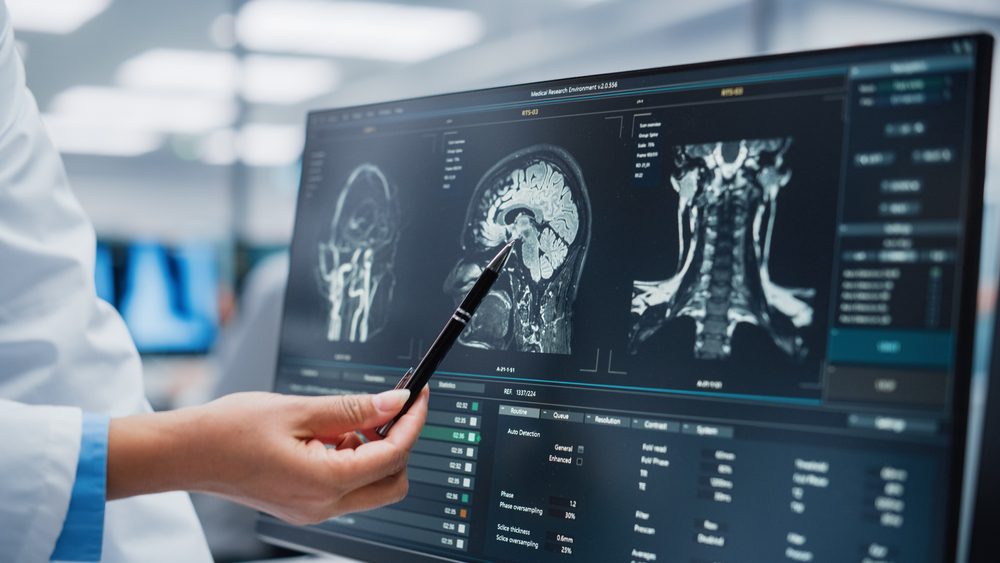Some of the rarest types of cancer, like chronic myeloid leukemia and Ewing sarcoma, affect less than 15 people per 100,000 every year. Rare cancers could affect any part of the body and have all kinds of risk factors, symptoms, and even outlooks.
You might have heard of the most important and “famous” types of cancer, including lung cancer, breast cancer, prostate cancer, and colorectal cancer. Even so, some cancers are much rarer. The National Cancer Institute added that the rarest forms of cancer affect less than 15 people out of 100,000.

Adrenal cortex carcinoma
Adrenal cortex carcinoma (ACC) generally affects the outer part of the adrenal gland, which makes cortisol, for instance. The ACC is wildly rare. So much so, it only affects 1 person in a million in the United States. It’s way more common in females than in males.
ACC could develop at any given time, but it mostly occurs in middle-aged adults. People with specific inherited conditions like Li-Fraumeni syndrome or Beckwith-Wiedemann syndrome are at much higher risk.
ACC tumors could easily produce excess hormones. Given all this, the symptoms of this cancer are oftentimes related to those of an excess of cortisol and sex hormones like estrogen and testosterone. A 2022 study analyzed survival rates in 47 people with ACC and discovered that the median overall survival rate was 3 to 4 years.
Chronic myeloid leukemia
Chronic myeloid leukemia (CML) is a slowly growing type of leukemia that generally affects myeloid stem cells that ultimately become blood cells like neutrophils. Even if it’s one of the four major types of leukemia, CML is still awfully rare.
In 2018, at least, it was believed that 1 in 100,000 people suffer from it. The risk of CML increases as we age, and it’s way more common in males. Moreover, previous radiation exposure is the only known risk factor. Some of the most common symptoms of CML could also include weakness and fatigue, fever, night sweats, unintentional weight loss, and bone pain.
Ewing sarcoma
Ewing sarcoma is a very aggressive type of bone cancer that generally affects children and adolescents. Even if it’s only the second most common type of bone cancer in this particular age group, it only affects 1 to 3 million people every year.
In most cases, Ewing sarcoma is diagnosed in adolescents. This cancer is also a bit more common in men. The main symptoms of Ewing sarcoma could also include pain and swelling in the area of the tumor. There are also other general symptoms like fatigue, fever, and even unintentional weight loss.
Eye cancer
Eye cancer is mainly any type of cancer that is first seen in the eye. Ocular melanoma is the most “famous” one, especially in adults, but it only affects 5 out of 1 million people in the United States. Other eye cancers are less common, such as non-Hodgkin’s lymphoma, retinoblastoma, and medulloepithelioma.
The risk of eye cancer generally depends on the specific type of cancer. For instance, some risk factors for ocular melanoma also include older age, a generalized family history of melanoma, and having lighter-colored skin. Other important symptoms could include eye redness, eye pain, vision changes, reduced vision, and vision loss.

Gallbladder cancer
Gallbladder cancer initiates in the gallbladder, which also stores bile, which is used for digestion. In the United States, at least, it usually occurs in 1.4 out of 100,000 females and 0.8 out of 100,000 females. Some risk factors also include older age, being female, a long history of gallbladder cancer, gallstones, and obesity.
The major symptoms in the case of gallbladder cancer mainly refer to abdominal pain, nausea, vomiting, jaundice, reduced appetite, unintentional weight loss, and an abdominal feeling that you can easily feel. The 5-year relative survival rates for this type of cancer are:
- localized (69%);
- regional: 28%;
- distant: 3%;
- overall: 20%.
Hairy cell leukemia
Hairy cell leukemia is a very dangerous type of cancer because it affects the B cells, which are those immune cells in charge of producing antibodies. In HCL, the affected cells seem “hairy” under a microscope. Men are more affected by HCL: the estimates showed a 0.3 out of 100,000 rate in males and a 0.1 out of 100,000 rates in females all over the world.
But here’s the thing with HCL: the older you get, the higher your risk of having this type of cancer. People with HCL usually register low blood counts, which later lead to anemia, an increased risk of infection, and even bruising and bleeding. The spleen is also enlarged, which is why you might notice abdominal swelling and pain.
Hepatoblastoma
Hepatoblastoma is a specific type of liver cancer that targets children. It is also one of the most common types of liver cancer for this specific age group, although the chances of a child suffering from Hepatoblastoma are wildly rare. It affects only 1.5 out of 1 million people every year.
As many cases of hepatoblastoma usually occur randomly, one-third are associated with other genetic conditions such as Beckwith-Weidemann syndrome or even familial adenomatous polyposis. Also, a low birth weight could increase the risks.
Some of the most common symptoms include an abdominal lump that can be somehow painful and gets larger as cancer advances, abdominal swelling, reduced appetite, vomiting, unintentional weight loss, and nausea.
Kaposi sarcoma
Kaposi sarcoma begins in cells that line your blood vessels. It is mainly caused by infection with a virus known as Kaposi sarcoma-associated herpesvirus (KSHV). The virus affects 6 in 1 million people in America every year.
However, worldwide, there are far more people suffering from KSHV than KS, and that’s mainly because KS thrives in a body with a weakened immune system, which might result from an organ transplant, living with HIV, or simply the natural process of aging. The main symptoms of KS include skin lesions, mouth and throat lesions, and lesions inside our bodies that might bleed.
Lip cancer
Lip cancer is a well-known type of oral cancer that originates on the lips. Only in America do 9.5 out of 100,000 people suffer from lip cancer every year. The main risk factors for this type of cancer are older age, being male, tobacco use, heavy and prolonged alcohol use, exposure to UV radiation, and human papillomavirus infection (HPV). If you suspect you have lip cancer, then you might have the following symptoms:
a lesion on the lip that simply doesn’t go away;
a lump or area of thickening on your lip;
a white patch on your lip;
unexplained bleeding and pain.
Breast cancer in males
One of the rarest types of cancer is something you’d never thought could be problematic for men, and yet it is. I’m talking about breast cancer for men. Back in 2017, the Centers for Disease Control and Prevention (CDC) discovered there’s a rare type of breast cancer that targets 1.28 out of 100,000 males. Some of the most important factors include older age, a family history of breast cancer (even more if other male family members had it), specific gene mutations (BRCA 1 and BRCA 2), radiation exposure, high estrogen levels, and Klinefelter syndrome.
Retinoblastoma
Retinoblastoma is a specific type of cancer that affects the retina of the eye in children. It’s highly common in children, affecting 11 out of 1 million kids younger than 5 years old in all corners of the world. Retinoblastoma is mainly caused by a gene change that could be inherited.
Given this, having a family history of retinoblastoma might put a child at a much greater risk of suffering from this type of cancer. The main symptoms of retinoblastoma include a white pupil, crossed eyes, red eyes, bulging eyes, reduced vision, and eye pain.
Finding out more about the rarest types of cancer is a difficult subject to navigate. You might want to learn more about the matter, and that’s why I highly recommend you try “The Cancer Revolution” audiobook.
If you’re interested in reading other articles, here’s what we recommend: Top 8 Random Things Scientists CAN’T Figure Out














